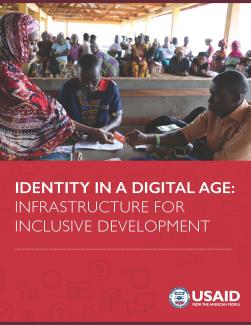There may be no single factor that affects a person’s ability to share in the gains of global development -- to receive services and be represented -- as much as having an official identity. Identity is tied to voting rights, financial inclusion, land ownership, education, and can even help protect against human trafficking or child marriage. In many ways, the roughly 1.1 billion people who lack official identity are invisible, discounted, and left behind. Yet the complex political and social forces behind identity systems are often overlooked or misunderstood, leading to inefficiencies and missed opportunities for inclusive and sustainable ID systems.
ID systems are a critical part of development infrastructure, impacting institutions ranging from governments, NGOs, service providers, private vendors, and the individuals who need IDs to access key services. ID systems can help create a basis of trust and inclusion that strengthens democracies and free market economies. They can also be used by authoritarian regimes to exclude or oppress. Balancing the value and risks that ID systems create for both individuals and institutions is key to sustainable ID infrastructure.
Part 1 of this report discusses instrumental and infrastructural approaches to ID and argues for long-term investments in ID infrastructure. Institutions and individuals each have key roles in the ID ecosystem, and we will discuss the tensions inherent in trying to serve both. Part 2 of this report asks how the ID landscape is changing. Emerging technologies will expand the options for identifying and authenticating individuals and introduce new actors across the DID value chain. While some emerging trends may offer greater opportunity for inclusion, higher confidence in authentication, or better data security, new technologies and new actors may also change the roles of traditional ID-granting institutions and their relationships with ID-holding individuals. How we address these emerging trends in technology will determine whether ID is an instrument of empowerment and inclusion or surveillance, disempowerment, and exclusion.

An official website of the United States government
Here's how you know
The .gov means it’s official.
Federal government websites often end in .gov or .mil. Before sharing sensitive information, make sure you’re on a federal government site.
The site is secure.
A lock () or https:// ensures that you are connecting to the official website and that any information you provide is encrypted and transmitted securely.
